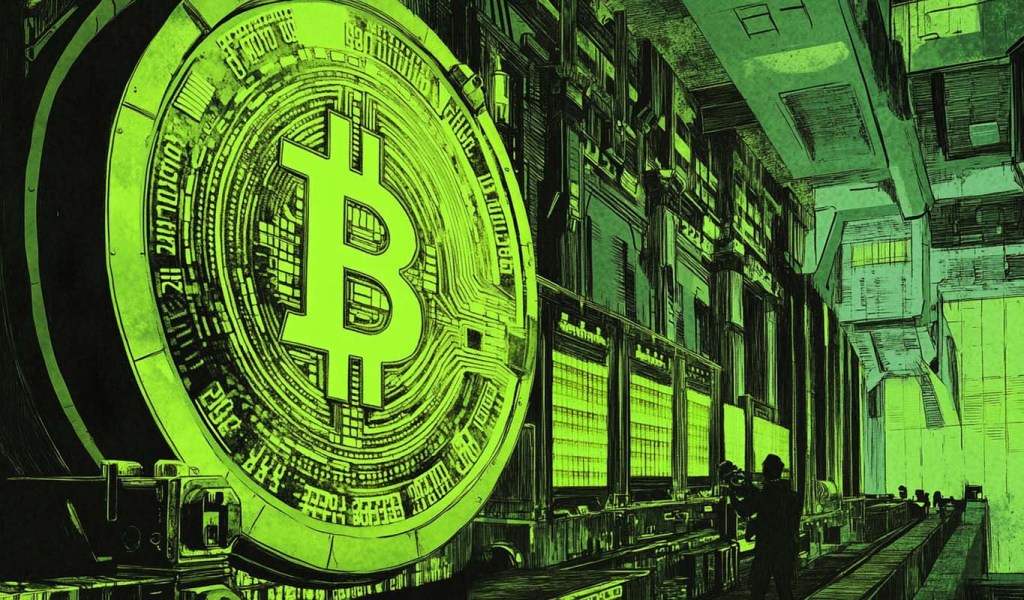
Blockstream CEO Adam Back says that Bitcoin (BTC) is still in the early stages of the current bull market as the adoption of the flagship crypto asset mounts. In a new interview with CNBC, Back says that Bitcoin’s buying demand remains high across various investing segments, including exchange-traded funds (ETFs), and that the bull market […]
The post Bitcoin Still in the Early Stages of a Bull Market, Says BTC Veteran Adam Back – Here’s His Outlook appeared first on The Daily Hodl.

The post-quantum era is still “several decades away,” but it could be a net positive for the Bitcoin network’s security.
Advancements in quantum computing have the potential to strengthen the Bitcoin network in the coming decades, even though there are widespread concerns about the technology’s ability to compromise cryptographic encryption.
Industry insiders have previously voiced concerns that quantum computing may break cryptographic algorithms in the future, thanks to its ability to perform computational processes at previously unimagined speed, thanks to advancements in quantum physics.
Yet despite these concerns, quantum computing could lead to a stronger Bitcoin (BTC) network, according to Adam Back, co-founder and CEO of Blockstream, the inventor of Hashcash and one of the most notable cryptographers in the industry.

In an exclusive interview with Cointelegraph, Back explains why Bitcoin’s value relies on its dual identity as hard money and digital gold.
Adam Back, the co-founder and CEO of Blockstream, is convinced that the identity of Satoshi Nakamoto, the founder of Bitcoin, will always remain a mystery—and that this is a positive thing for Bitcoin.
“Many people have tried to research, look at all the emails, look at all the forum posts, and tried to deduce something from a digital footprint over 15 years, and found nothing,” he said in an exclusive interview with Cointelegraph’s managing editor Gareth Jenkinson.
According to Back, an early Bitcoin developer who exchanged emails with Satoshi, the fact that Bitcoin doesn’t have a central figure, like Vitalik Buterin for Ethereum, strengthens its status as a commodity. This sets it apart from most other cryptocurrencies, which could be more easily compared to securities.
 With the HBO documentary set to release on Wednesday, claiming to reveal the true identity of Satoshi Nakamoto, Polymarket bettors are actively speculating on who it might be. As of this writing, Len Sassaman, who previously led the wagers, has fallen behind, while Blockstream’s Adam Back now leads with a 22.5% probability of being named […]
With the HBO documentary set to release on Wednesday, claiming to reveal the true identity of Satoshi Nakamoto, Polymarket bettors are actively speculating on who it might be. As of this writing, Len Sassaman, who previously led the wagers, has fallen behind, while Blockstream’s Adam Back now leads with a 22.5% probability of being named […]
Blockstream chief executive Adam Back says that Bitcoin (BTC) remains in the early stages of an ongoing bull market cycle. In a new interview with Anna Tutova, the CEO of Coinstelegram, the longtime Bitcoin veteran says Bitcoin could potentially soar more than 700% from the current value this cycle. “We’re still in the early stages […]
The post Bitcoin Veteran Adam Back Says BTC in Early Bull Market Phase, Could Explode by Over 700% – Here’s the Timeline appeared first on The Daily Hodl.
 At block height 839,856, the Bitcoin blockchain stands a mere 144 blocks short of the forthcoming reward halving at block height 840,000. Historically, bitcoin’s price has seen substantial increases following prior halving events. However, there are speculations that this occurrence might not follow the previous pattern. This week, the creator of the stock-to-flow (S2F) price […]
At block height 839,856, the Bitcoin blockchain stands a mere 144 blocks short of the forthcoming reward halving at block height 840,000. Historically, bitcoin’s price has seen substantial increases following prior halving events. However, there are speculations that this occurrence might not follow the previous pattern. This week, the creator of the stock-to-flow (S2F) price […] Roger Ver, an early Bitcoin investor, has decided to continue supporting Bitcoin Cash (BCH) over Bitcoin (BTC) despite an invitation from Blockstream CEO Adam Back to rejoin the Bitcoin community. Ver criticizes layer two blockchain solutions, like Back’s Liquid Network, as centralized or unreliable, maintaining that bitcoin cash more closely aligns with the original vision […]
Roger Ver, an early Bitcoin investor, has decided to continue supporting Bitcoin Cash (BCH) over Bitcoin (BTC) despite an invitation from Blockstream CEO Adam Back to rejoin the Bitcoin community. Ver criticizes layer two blockchain solutions, like Back’s Liquid Network, as centralized or unreliable, maintaining that bitcoin cash more closely aligns with the original vision […] In the unfolding lawsuit between the Crypto Open Patent Alliance (COPA) and Craig Wright, three key witnesses who had early interactions with Bitcoin’s creator, Satoshi Nakamoto, provided their testimonies. Among them were early Bitcoin developers Martti Malmi and Mike Hearn, as well as Adam Back, the creator of Hashcash, the proof-of-work (PoW) algorithm integral to […]
In the unfolding lawsuit between the Crypto Open Patent Alliance (COPA) and Craig Wright, three key witnesses who had early interactions with Bitcoin’s creator, Satoshi Nakamoto, provided their testimonies. Among them were early Bitcoin developers Martti Malmi and Mike Hearn, as well as Adam Back, the creator of Hashcash, the proof-of-work (PoW) algorithm integral to […]

Resolving recent systemic failures in the cryptocurrency ecosystem and the prospect of spot Bitcoin ETF approvals could drive Bitcoin to $100,000 in 2024.
The COVID-19 pandemic, rampant inflation and regional conflicts directly influenced Bitcoin’s (BTC) drop in value over the past two years. However, 2024 promises to be a resurgent period, according to Blockstream CEO Adam Back.
The cryptographer, who pioneered the proof-of-work algorithm applied in Bitcoin’s protocol, tells Cointelegraph that the preeminent cryptocurrency is trailing below the historical price trend line of previous mining reward halving events.
Back weighed in on the potential price action of Bitcoin as the next halving approaches, which will see Bitcoin miners’ block reward reduced from 6.25 BTC to 3.125 BTC. Block reward halvings are programmatically hardwired into Bitcoin’s code, taking place after every 210,000 blocks.

Blockstream CEO Adam Back says 2023 presented a unique investment opportunity with Bitcoin’s price doubling amid low ASIC miner prices on secondary markets.
Blockstream will look to raise more capital to buy Bitcoin (BTC) mining hardware through a second series of its Blockstream ASIC (BASIC) Note offering, which aims to accumulate and sell ASICs based on the predicted demand for miners over the next two years.
Speaking exclusively to Cointelegraph, Blockstream CEO Adam Back highlighted a surplus of Bitcoin mining hardware on the secondary market as a critical driver for a second series of its investment offering.
Blockstream wound up an initial $5-million raise, which saw the firm purchase unused, boxed Antminer S19k Pro ASIC miners for $4.87 million. The company managed to secure the hardware, one of the Chinese manufacturer’s most popular miners, through SunnySide Digital.